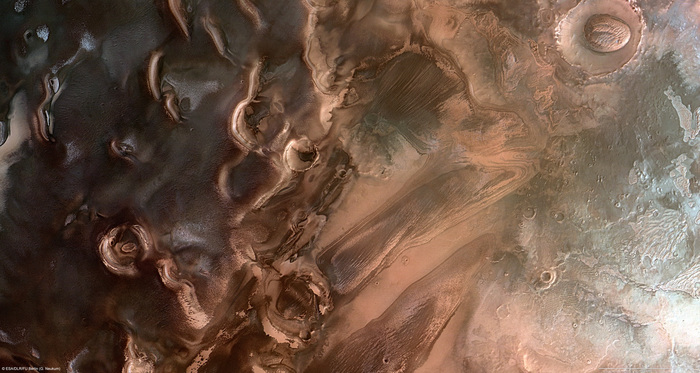At the South Pole of Mars there is a volume of water ice between 1 and 1.3 million cubic kilometers.
This is indicated by the estimates obtained by Italian research based on data collected in the past by multiple missions, including Mars Global Surveyor, Mars Odyssey, Mars Express and Mars Reconnaissance Orbiter.
Published in the journal Icarus, the study was coordinated by the Department of Mechanical and Aerospace Engineering and the Space Robotics Investigation Group of the Sapienza University of Rome.
"Accurate knowledge of the composition of the polar cap represents one of the main scientific objectives for understanding the evolution of the Martian climate", observes the research coordinator, Antonio Genova.
"Understanding the natural causes that have determined temporal variations in climatic conditions on similar planets - he adds - is of great relevance and fits into the context of research on Earth's climate change".
The geophysical data acquired by space missions have made it possible to determine the quantity of water still present on Mars and have also provided useful elements for better understanding the evolution of the climate on the red planet and also on Earth.
The Martian polar ice caps, like those on Earth, are a sort of memory of the evolution of the climate.
It has been demonstrated that Mars once had rivers and seas, while it remains to be clarified how water disappeared from the surface.
For this reason, answers are sought in the concentration of the three main elements in the polar ice caps, namely dust, dry ice and water ice.
The results of the Italian research indicate that in 80% of cases the water concentration exceeds 50% on the surface of the deposits of the three elements.
The dust map also indicates a high volume with the western areas, bordering the probable remains of a polar cap formed in previous geological eras and the discovery seems in line with the shift of the polar axis of Mars, probably due to an impact , with the consequent migration from the position of the oldest polar ice cap to the current one.
Reproduction reserved © Copyright ANSA

